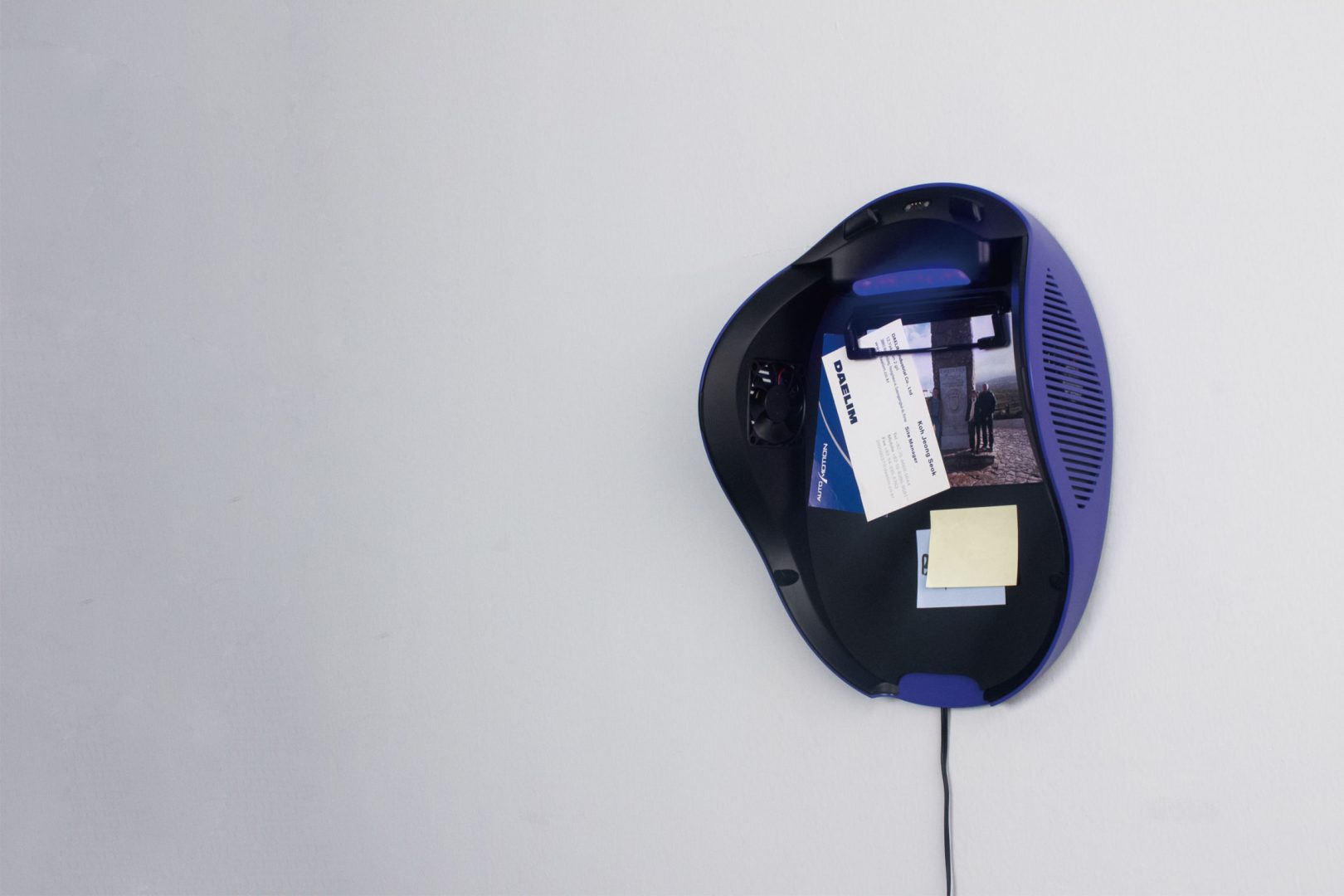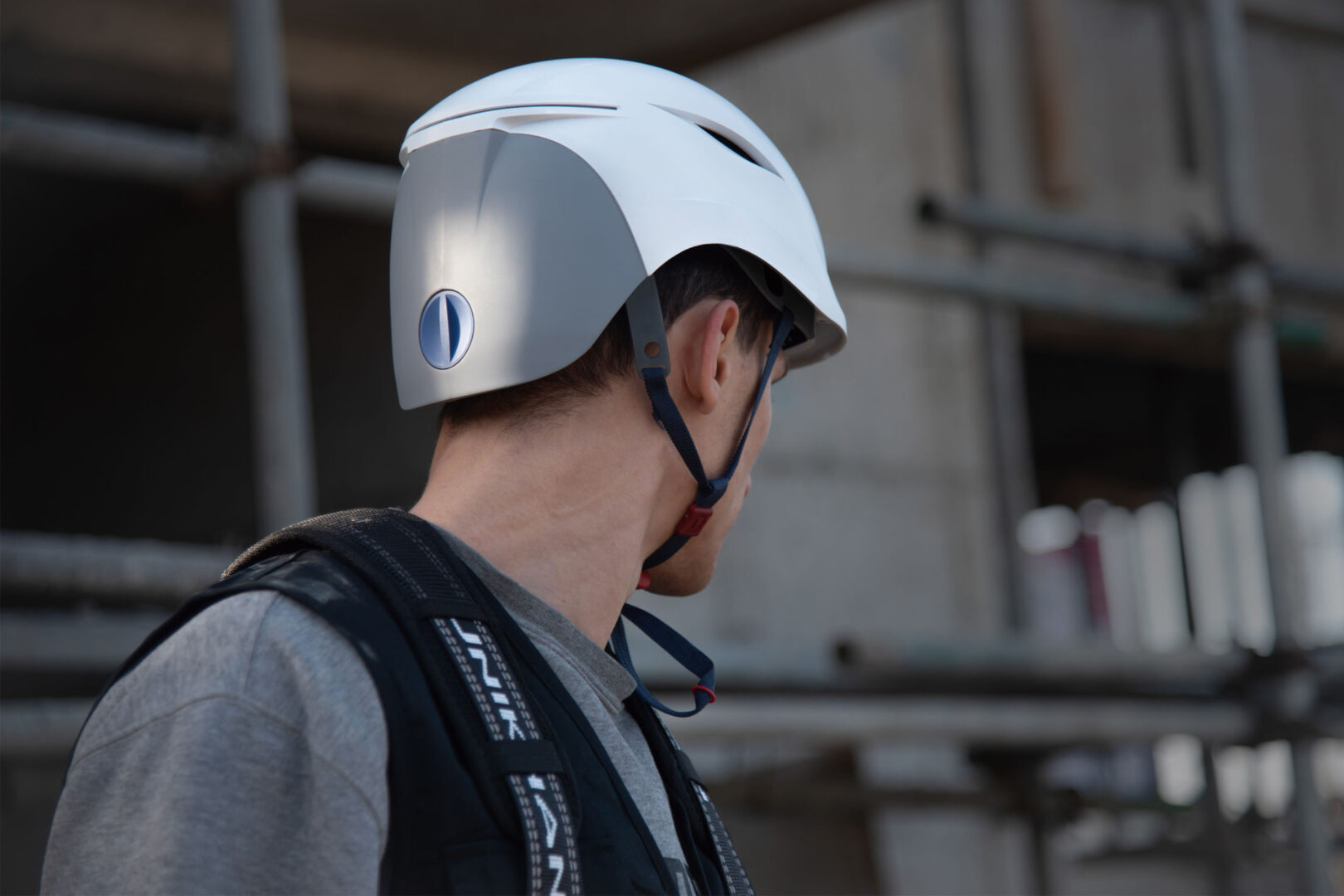
Wave Hat – Brain wave tracking smart hard hat
I+ID & OND Kwanmyung Kim, Sagjin Joo & Hwang Kim, Dabin Lee, Soyoon Park, Jiyoung Lee, Hyemin Choi, Hyojeong JinWave Hat’s carefully chosen LED colors on the back emit different signals to express the user’s condition. To achieve sustainability of the smart hat, the main electronic components are embedded in the harness of the hard hat. The outer shell is easily replaceable. The appropriate weight by human factors engineering is also a key design achievement of the product. The lightweight material and structure of the smart helmet is a key design solution for a successful product. The collected and transmitted brainwave and other health data makes it possible to monitor the user’s health and condition in a seamless manner.
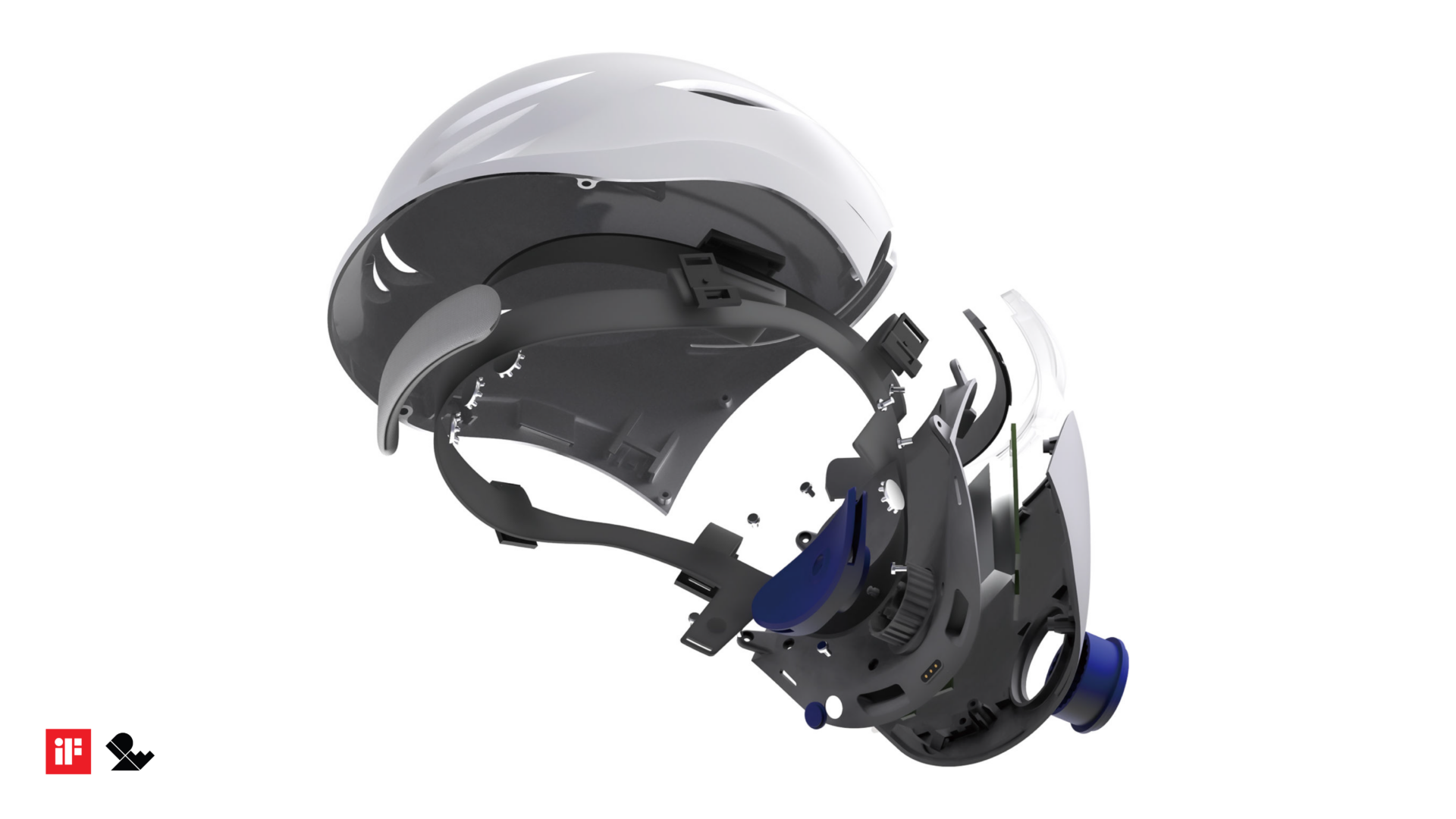
Idea
A high number of industrial accident cases are at the top of the S.Korean political agenda. An emerging tech start-up HHS drives a passion to tackle this difficult problem with smart technology, user-centered design, and service design thinking.
Industrial workers are obliged to wear a hardhat at all times at the construction site by S.Korean law, it is logical to develop a smart hard hat equipped with various health-tracking sensors include EEG brain-wave tracker. Connected Wave hat collects health and condition data and transfers to the safety management services to enable teams to effectively look and manage conditions on-site simple way.
Form
Wave hat design is inspired by the visual image of the brain wave, which gives a free and flexible impression. By choice of bluish-purple and white as the main color, it conveys the image of futuristic technology and stability at the same time.
Through qualitative research and design ethnographic study process, the design team discovered inner self-respect pride of construction experts. The design team developed a visual identity from the aesthetic keywords between flexibility, fluidity, faithful, honest, and right-minded. Research and imbed lightweight structure to the smart helmet was also one of the key design solutions to create success.
Function
Wave hat’s carefully chosen LED colors on the back emits different signals to express the user’s condition. To achieve sustainability of the smart hat, the main electronic components are embedded in the harness of the hard hat so that the outer shell is easily replaceable.
Coming out with appropriate weight by human factors engineering is also key design achievement. Developed a lightweight material and structure to the smart helmet was one of the key design solutions to create success in the project. The collected and transmitted brainwave and other health data makes to possible to monitor user’s health and condition seamlessly.
Differentiation
Unlike other competitors’ smart helmets, the project has invested heavily in service design and user experience design to increase positive and proactive attitudes from its user. As a result, the Wave Hat does more than achieving safety management efficiency. It transparently delivers users’ physical and mental conditions in a simple and sufficient way via a companion app.
It is difficult to manage complex safety conditions in large construction areas. Appropriate safety education and self-safety management by habit-forming and behavioral change methods with pleasant user experience could be the right strategy. The Wave Hat is an innovative solution that is a user-oriented digital safety service.
Impact
More than 1,700 people have died in accidents at industrial sites in South Korea in 2019. In the 2016 OECD Fact Book, Korea was listed as a country with the most industrial accident cases, which topped 82,780 cases. The main reason is a pressure for high-performance, which pushes managers and workers for more performance results on the site. Also, there is a lack of appropriate safety systems, awareness education programs, and not enough safety supervisors.
The Wave Hat and Wave System could leverage to solve this difficult problem and increase safety in harsh working environments and value everyone’s life.
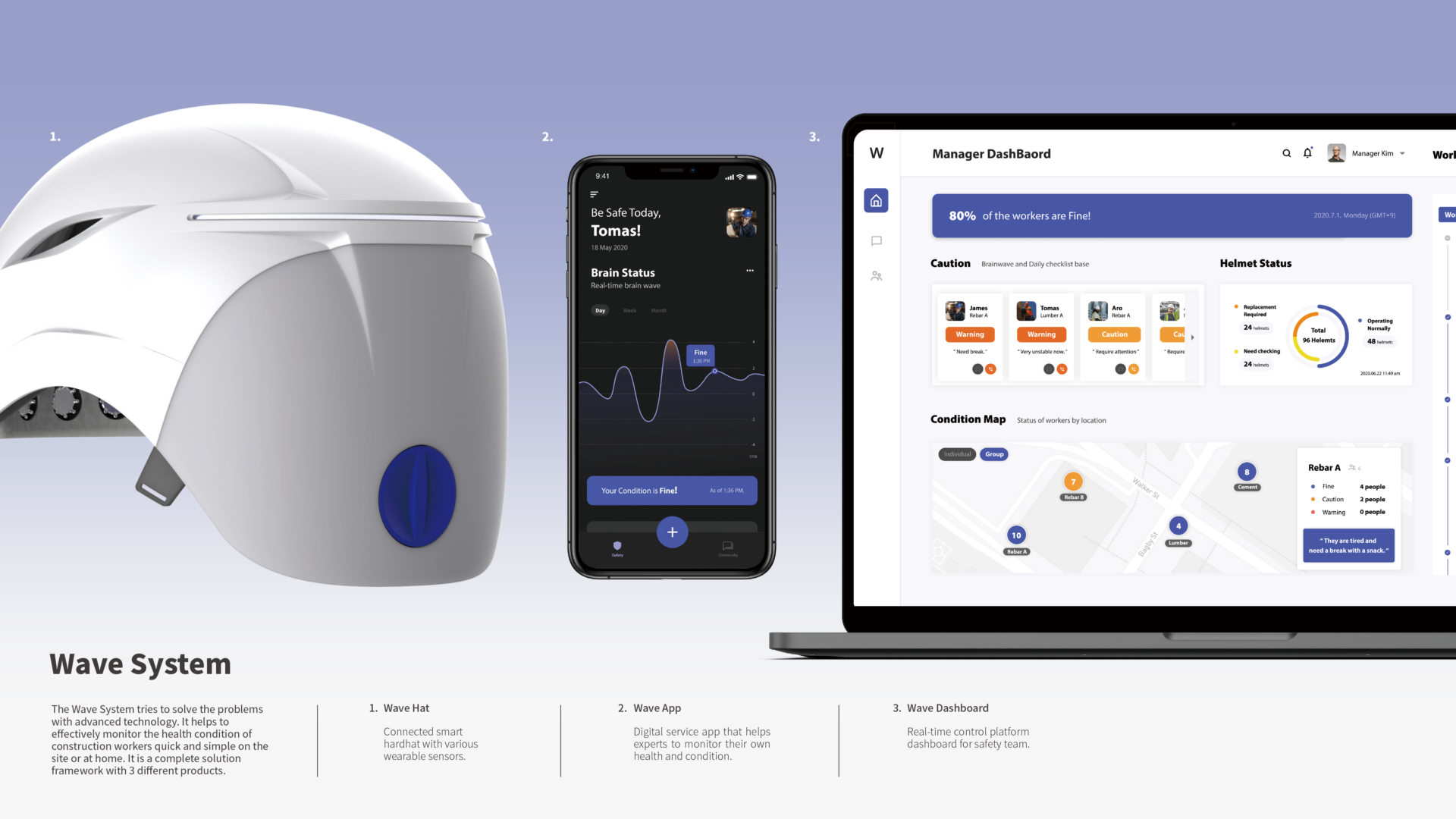
Wave Hat – Smart Hardhat Design – Wave System/ Copyright © OND & I+ID Lab – UNIST
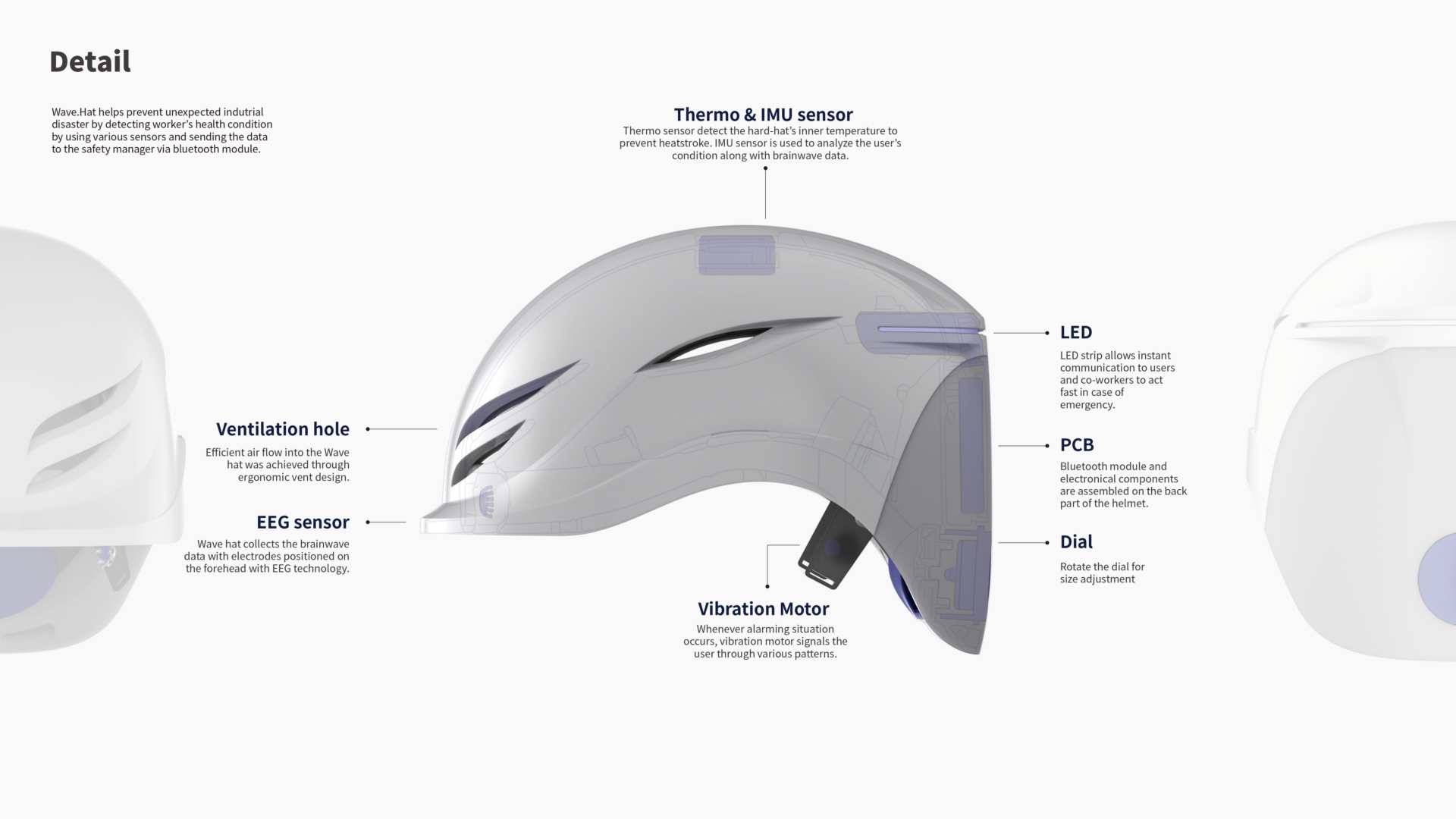
Wave Hat – Smart Hardhat Design – Detail/ Copyright © OND & I+ID Lab – UNIST
Detail
Wave Hat helps prevent unexpected industrial disasters by detecting worker’s health conditions using various sensors and sending the data to the safety manager via a Bluetooth module. Thermosensor detects the inner temperature to prevent heatstroke. IMU sensor is used to analyze the user’s condition along with brainwave data. Efficient air flow into the hat is achieved through ergonomic vent design.
Wave Hat collects the brainwave data with electrodes positioned on the forehead with EEG technology. Whenever an alarming situation occurs, the vibration motor signals the user through various patterns. LED strip allows instant communication to users and co-workers to act fast in case of an emergency. Bluetooth module and electrical components are assembled on the back part of the helmet.
Usage
The user can check the remaining battery and take out the Wave Hat from the dock. If the outer shell is damaged, the user can change it by disassembling the shell and band-electronic part. The Wave Hat is activated by pressing the button inside. By rotating the dial, users can adjust the size of the inner rim. The vibration motor indicates whether the device is properly worn. EEG sensors constantly collect the brainwave data while LEDs show the user’s health condition. When workers are injured, the Wave Hat emits emergency signals. Once the users complete the day’s work, they can remove the helmet and place it on the dock for charging.
Sustainability
By law, every hard hat is required to be replaced every 6 months. Thus, the shell component of the Wave Hat is designed for easy replacement. At the same time, the sensors and other electronic components do not require replacement. This reduces the product’s plastic waste at the end of its life cycle.
